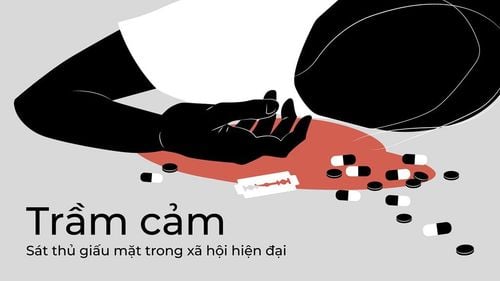This is an automatically translated article.
In the context of the Covid-19 pandemic, the number of patients experiencing psychological problems is increasing. Compared with traditional psychotherapies, walking and talking therapy not only provides an opportunity to relieve stress and eliminate negative thoughts, but also promotes physical activity and improves circulation. and health.1. What is talk therapy?
Talk therapy, also known as psychotherapy, is a way psychiatrists use to communicate with patients. The purpose of this therapy is to help identify problems that are causing emotional distress for the patient. For some people, these problems are complex and can lead to medical diagnoses such as depression or anxiety. But for others, talk therapy may simply be a conversation to discuss feelings caused by everyday triggers, illness, relationships, or the impact of one's life. specific injury. Once the problem is identified, the therapist will help you figure out the effects of the problem and develop strategies and solutions to reduce symptom severity.In general, a talk therapy session lasts about an hour, usually 50 minutes. The frequency and duration of treatment depends on the severity of your symptoms and the treatment plan your therapist has developed.
2. What are the types of psychotherapy?
Behavioral Therapy: The goal of behavioral therapy is to reduce or eliminate self-destructive or unhealthy behaviors by addressing them and reinforcing desired behaviors.Cognitive Behavioral Therapy: Therapists who use cognitive therapy focus more on what you think than on what you do.
Humanistic therapy: In humanistic therapy there are three subtypes: client-centered therapy, Gestalt therapy (which is a person-centered form of psychotherapy that focuses on the present and challenges of the individual rather than delving into past experiences) and existential therapy (a form of psychotherapy that focuses on concepts that are broadly applicable to human existence). including death, freedom, responsibility and the meaning of life).
Psychodynamic therapy: This approach delves into the unconscious meanings and motives of your emotions, thoughts, and behaviors. In psychodynamic therapy, it is ideal to develop a relationship of trust between the therapist and the patient. Some will call this “talk therapy”.
Holistic or integrative therapy: Instead of focusing on one way, therapists use an integrative approach to therapy that combines elements from different theories to create a therapy that meets their needs. customer demand.

Liệu pháp nói chuyện giúp tìm ra căn nguyên vấn đề về tâm lý
3. What is walking and talking therapy?
Walking and talking therapy is very similar to traditional psychotherapy, but instead of seeing the patient in a traditional office setting, the therapist and patient will walk and discuss their problems. patient.4. The benefits of walking and talking therapy
Harnessing the healing power of nature: Patients can benefit from exercise and fresh air while talking about their problems. Patients seem to be more talkative, more relaxed, and often experience a dramatic change in thinking about relationships in life.Motivate patients to move forward - literally and figuratively: Patients will feel warmer and more comfortable when they see the therapist in a sweaty suit and sneakers. They will relax, without the confrontational, "microscopic" feeling they often experience when conversing between the four walls.
Encourage the patient to be more physically active. This therapy offers many benefits to both the mental and physical health of the patient.
Help a patient from falling apart in the face of difficulty : Some patients may become anxious when discussing a difficult problem in the traditional face-to-face manner. Parallel walking along with visual distraction may allow the patient to engage in conversation more easily.
Promotes deep, creative thinking: according to some psychologists, bold and insightful insights are often unleashed by physical activity.
5. Is walking and talking therapy right for you?
Many scientific studies have shown the positive effects of exercise on the brain, especially for people with depression. In addition, anxious or grieving patients are well treated with walking and talking therapy.Clients who are feeling trapped in a relationship or a job will find comfort in walking and talking therapy. Patients with domestic violence or substance abusers may also benefit from this therapy. In particular, walking and talking therapy seems to work well for male patients. Since experts say men may have difficulty making eye contact in an office, walking next to each other can help a male patient become more relaxed and open.

Liệu pháp đi bộ và nói chuyện giống với liệu pháp truyền thống
6. Walking, talking therapy and privacy concerns
Confidentiality is always the biggest concern of patients when participating in psychotherapy. What if the patient ran into someone they knew—perhaps a neighbor or co-worker—during a walk-in psychotherapy session. Has security been compromised? How will the situation be handled?According to therapists, that is exactly the type of situation that the therapist has a responsibility to raise to the patient before starting treatment. If the patient's acquaintances see him, the two can casually say "hello" and continue walking. It was just two people walking and talking, nothing to suggest that this was a psychotherapy session. As a result, patients can have complete peace of mind and feel comfortable in these situations.
Walking and talking therapy that combines an active lifestyle with the benefits of psychotherapy can create new energy and motivation for the patient. This therapy is especially helpful for patients who find it difficult or hindered by face-to-face communication in an office setting.
Please dial HOTLINE for more information or register for an appointment HERE. Download MyVinmec app to make appointments faster and to manage your bookings easily.
Reference sources: webmd.com, healthline.com












